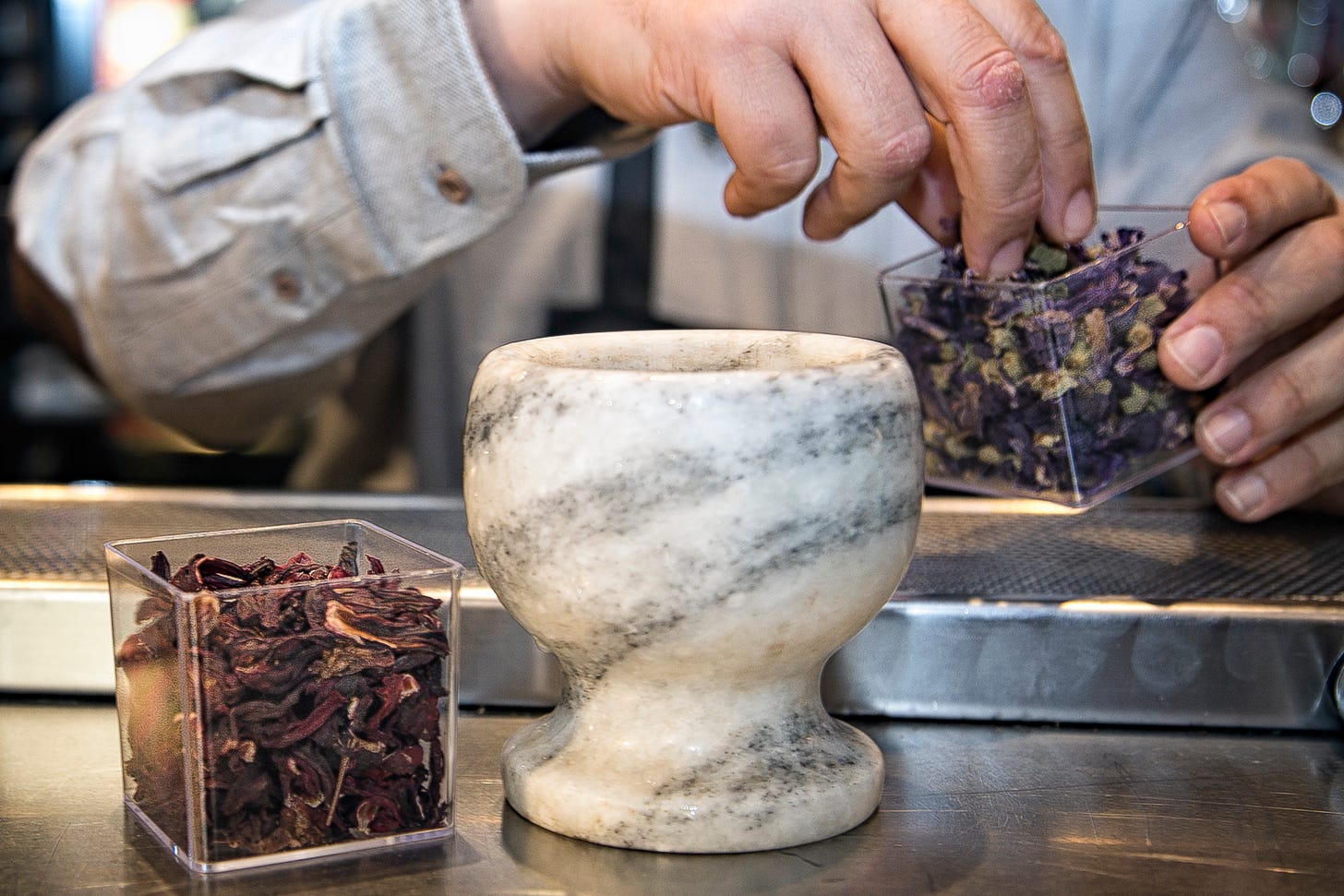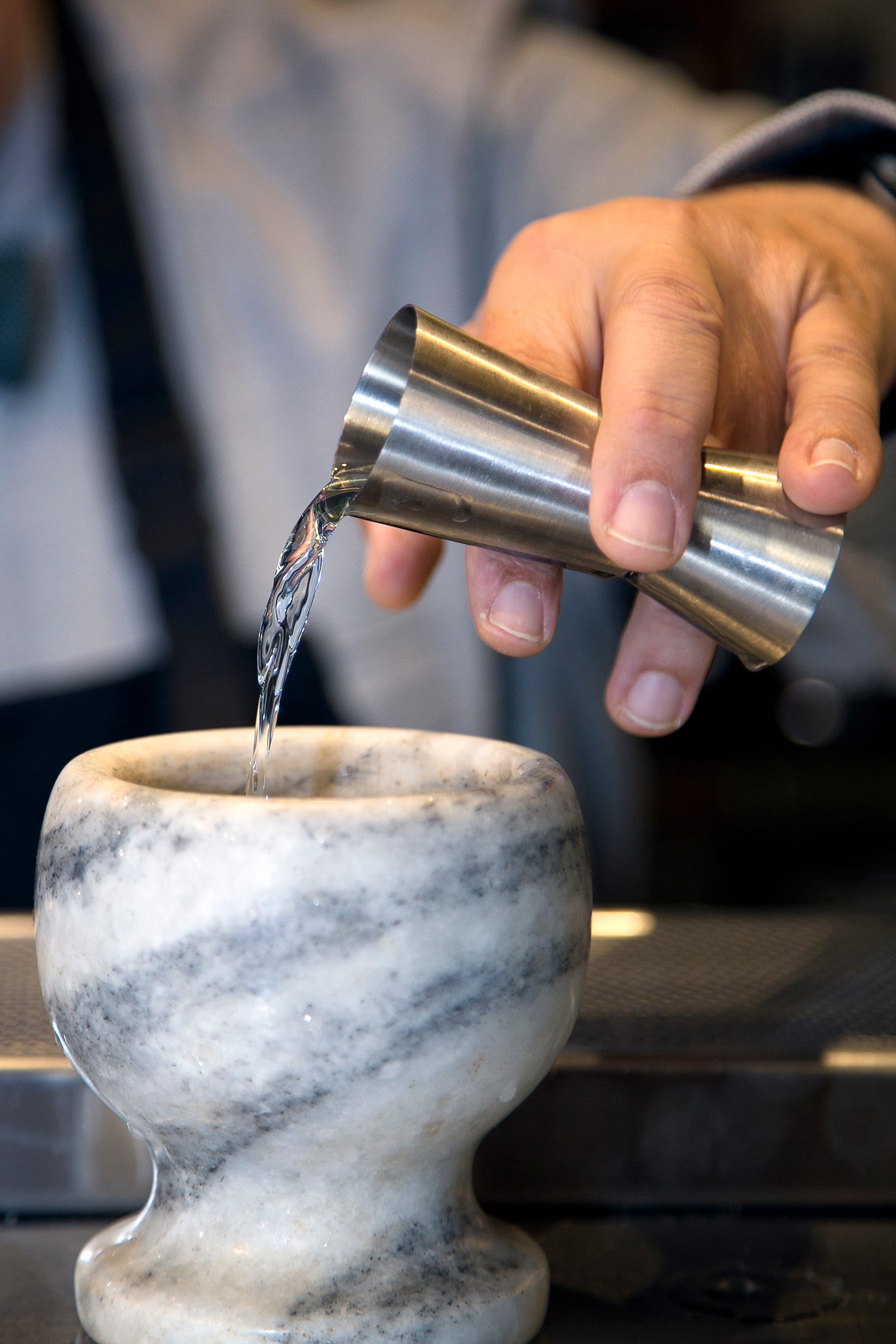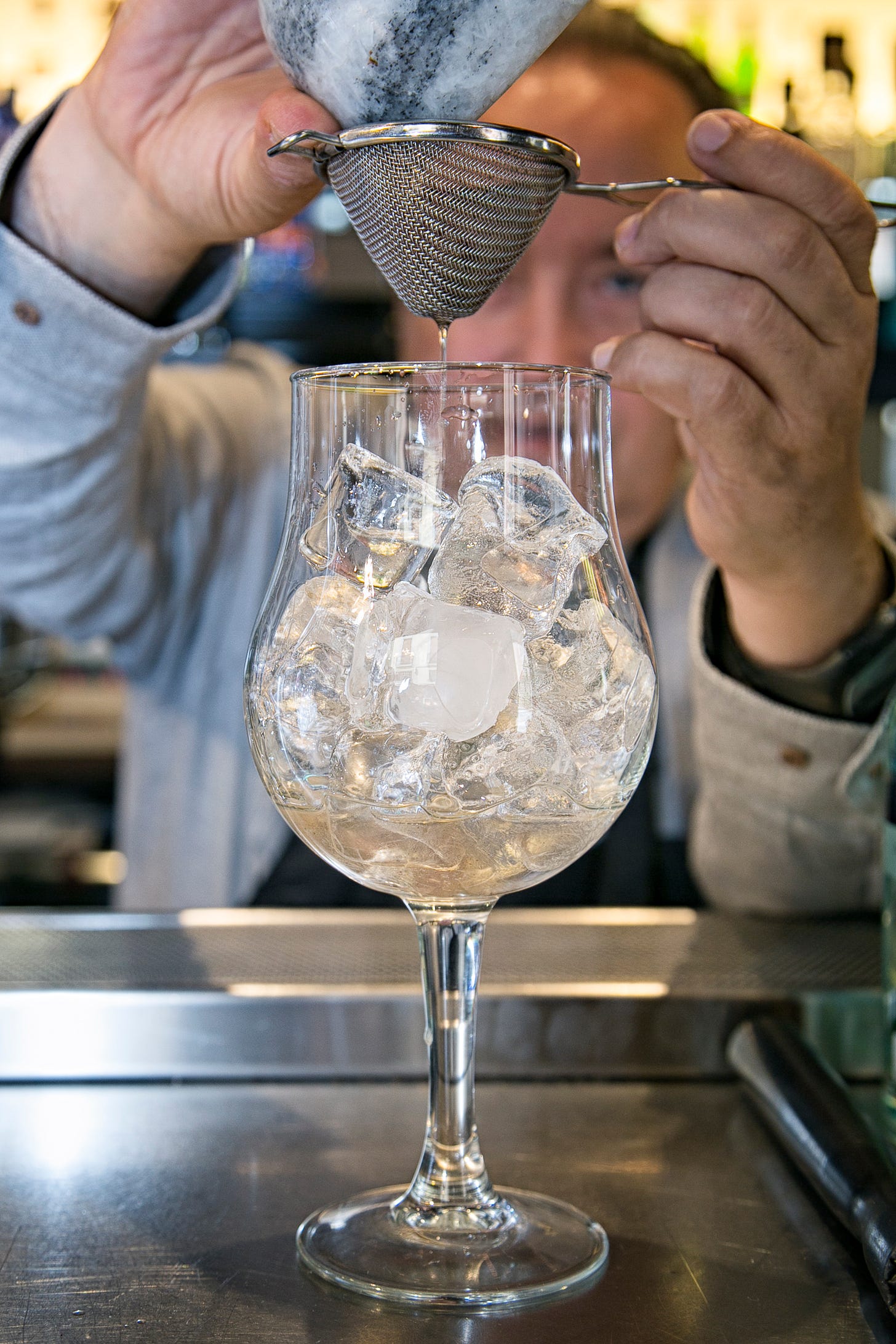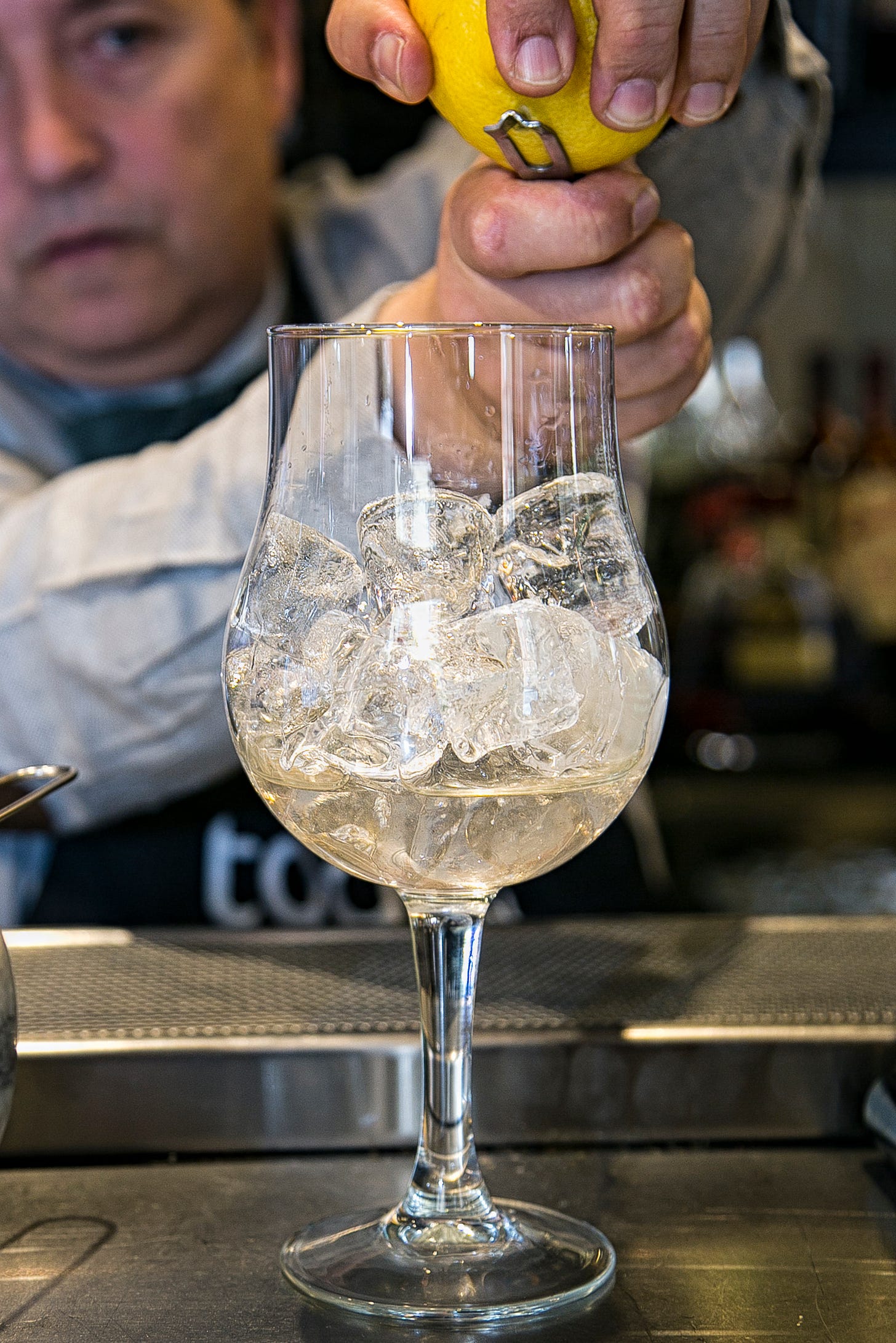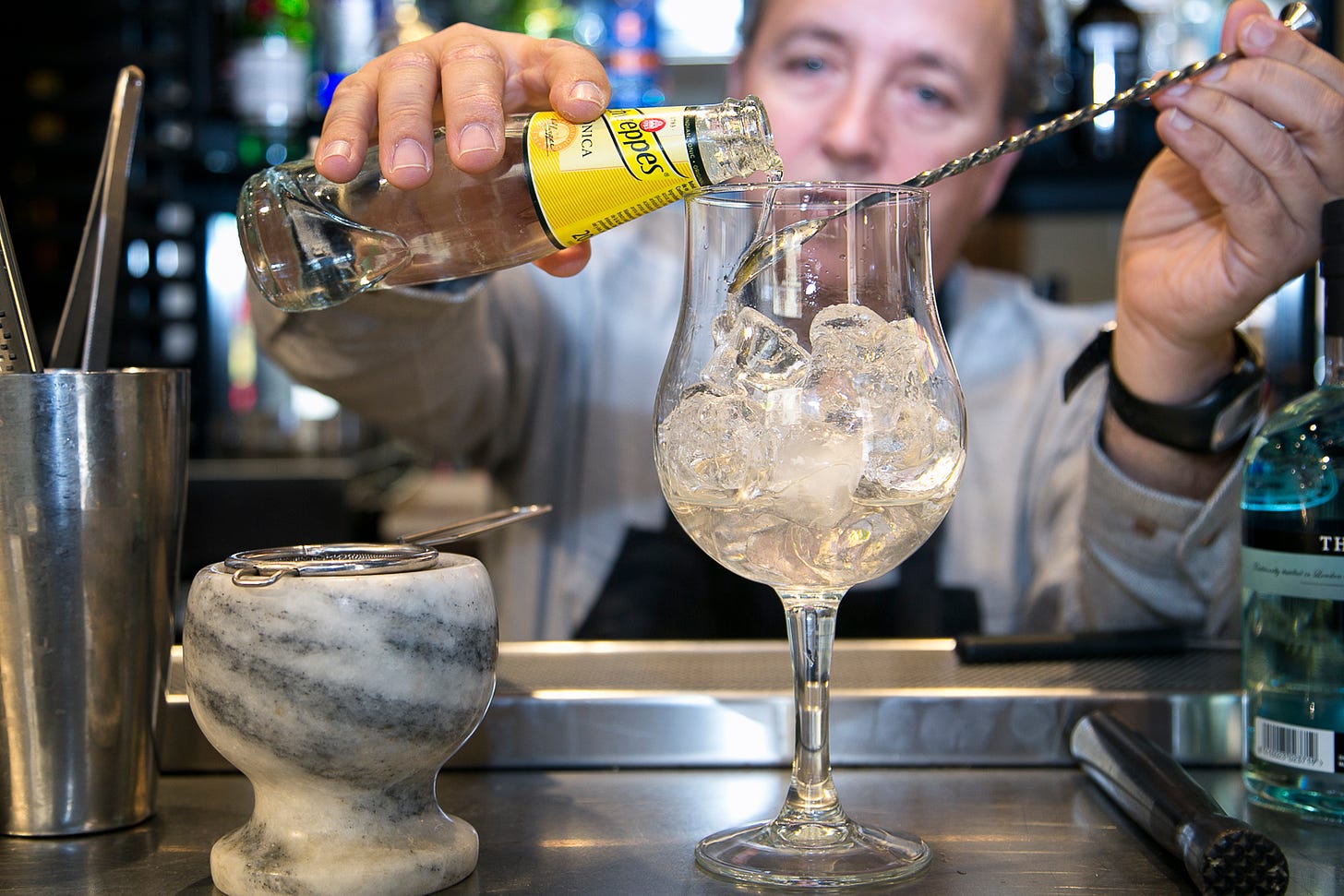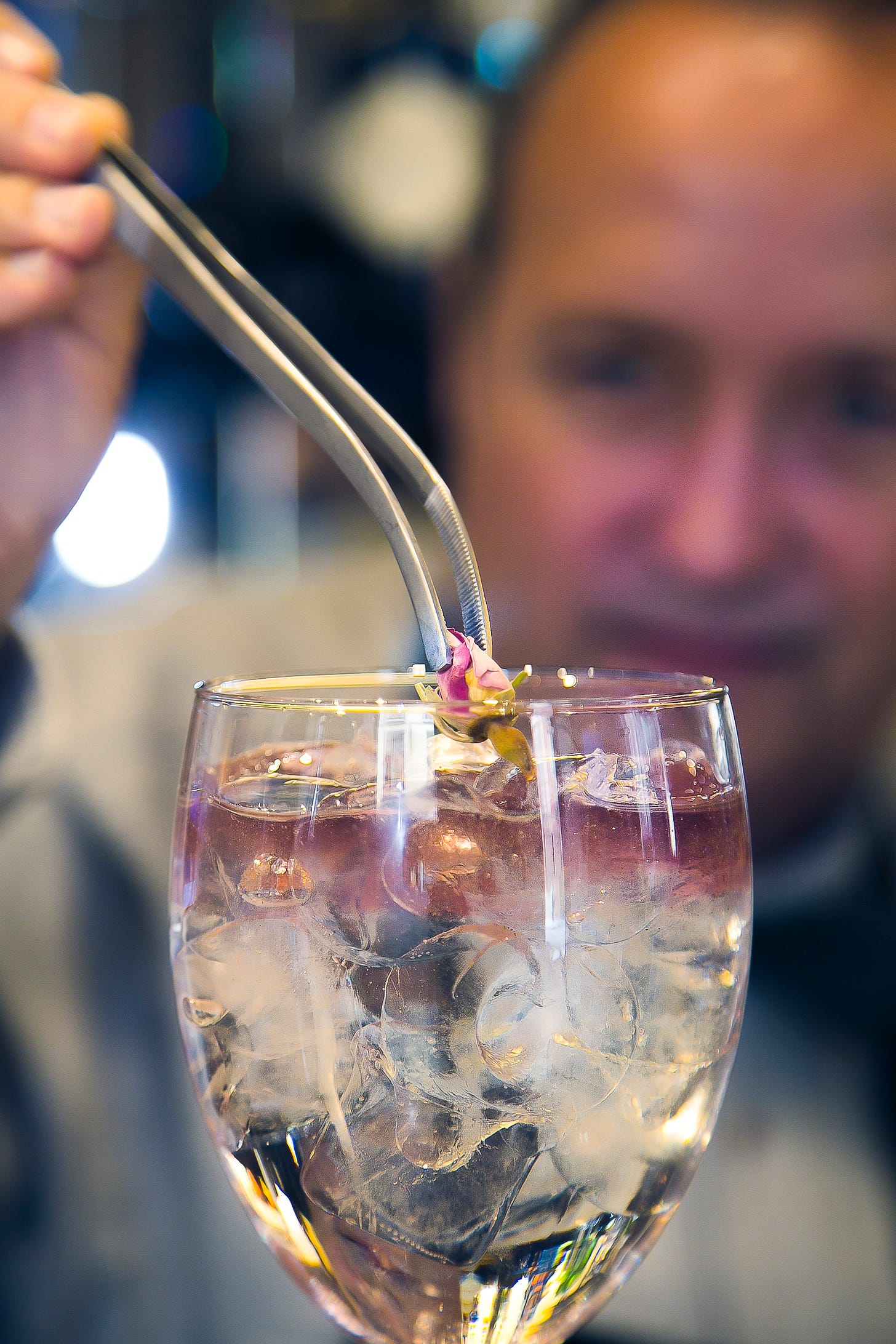17 bartender tips make the perfect gin tonic
If you want to order a gin and tonic in Spain, first drop the “and” from the drink’s name (it’s known simply as a “gin tonic”) and then be prepared to answer two serious questions from the barkeep.
First, what gin? Any respectable bar will have 10 to 50 bottles, or more, in stock. Second, what tonic? You should also know a favorite based on your preference for its handcrafted blend of bitter and sweet.
Being a complete cocktail neophyte, I was recently stumped when facing this interrogation at a swanky bar in Alicante and sheepishly asked the bartender to use whatever he thought best. I was rewarded with a refreshingly crisp, lightly floral quaff served in an iced balloon glass, or “copa de balon,” almost large enough to require the use of two hands.
In an instant, one luscious bittersweet sip helped me understand why the gin tonic had made a crazed ascent to become the national drink of Spain in less than a decade. But at the same time, it introduced a whole host of other questions. What makes a Spanish gin tonic different from the classic British stalwart? How many riffs on one cocktail can there be? Could I master the technique for the perfect gin tonic?
I sought out one of the reigning gin tonic masters in Spain to discover why this age-old cocktail is such a perfect foil for the Spanish philosophy that it’s good to play with your food. I also got some tips on making your personalized best GT.
“First, find your favorite gin and the best tonic to complement its style – whether you like a light, floral flavor; earthy, spiced blend; or fresh citrus flavor,” says Pepe José Orts, expert mixologist and botanicals guru.
Gin is created when a neutral spirit (vodka) is redistilled with a select mix of botanicals, herbs, spices or fruit to extract a distinct style. Juniper gives gin its requisite flavor, but many producers concoct secret and special combinations from a wide array of ingredients like anise, angelica or orris root, cardamom, cinnamon, coriander, grains of paradise, fennel, nutmeg, orange and lemon peels, rosemary, saffron, and thyme.
Save your pocketbook and liquor cabinet space with airplane-sized sample bottles for tasting parties and experimentation.
Among today’s almost ridiculous number of options, gins range in flavor from the popular artisanal Hendrick’s, using Bulgarian Damascus rose petals and cucumber, to Spain’s Gin Maré that infuses gin with arbequina olives, rosemary, and thyme to produce a more herbal, Mediterranean style. I even discovered a gin from Spanish producer, Ruchey, that is distilled with fresh loquats, making it curiously edgy with a whisper of apricot perfume.
It’s smart to have the requisite barkeep tools of the trade on hand like a small mortar and pestle, strainer, shot glass or jigger, long-handled stirring spoon, and a zester. Pepe never travels without them.
“It is the natural oils in the botanicals that infuse gin with flavor,” Pepe says. “Use the best and freshest ingredients you can find to match or complement the same flavors or found in your choice of gin.“
This is where the fun begins with an almost endless array of options to enhance the gin’s inherent style. Just as true when using spices and herbs in any cooking, freshness is critical. A personal favorite of Pepe’s, this freshly dried kumquat skin was full of rich aroma and flavor.
“Choosing what botanicals to use is like following a grandmother’s recipe,” Pepe says. “It is what comes naturally. Just use common sense.”
Spain’s fascination with perfecting this cocktail begins with selecting a mix of botanicals, herbs, flowers, and fruits that amplify the gin’s core flavor profile and adds a hint of color. Pepe’s collection is big enough to fill a small suitcase (in fact, he sells such a set in Spain), but a few fresh spices and herbs like hibiscus flowers, allspice, cardamom, and juniper berries will get you started.
Dropping a few juniper berries or peppercorns in your drink might be the hackneyed expectation, but Pepe suggests bruising a bouquet of botanicals with a mortar and pestle first before adding gin to absorb the flavors.
Lightly crushing your mix of botanicals will release their natural oils and infuse the gin with flavor. Gentle mashing with a pestle breaks down herbs and spices easily.
“Infusing gin for two minutes with the right mix of botanicals will bring out its natural subtle flavors,” Pepe says. “Like tea, longer is not necessarily better because it will increase tannic acids and leave a bitter finish. I like using rose petals with Hendrick’s or rosemary with Gin Maré.”
“Gin tonic is meant to be refreshing and served icy cold,” Pepe says. “Everything should be very well chilled, including the tonic and the glass.” Pack your glass with as many rock-hard ice cubes as you can. They will melt down in the process, so start with plenty. Pepe took care to use oversized ice cubes to keep the drink icy cold without diluting its flavor too fast.
“Water dilutes pure flavor,” Pepe says. “The less water in your drink, the better. After chilling down the glass with ice, drain off the melted water before adding chilled tonic and gin.”
No doubt you can drink GT’s any time of the year, but it’s no surprise that a drink designed to take the heat out of a sweltering summer day would be widely celebrated in Spain. A vigorous swirl for a minute or two with a long-handled spoon is all it took.
If you’re ready for an extreme gin tonic experience, a little dry ice buried deep in a teapot can chill things down in a hurry. Plus, it makes for a mesmerizing party trick. While this wasn’t one of Pepe’s recommendations, I couldn’t resist the magic of seeing my GT prepared this way in another bar.
“While a classic, British-style G&T is typically mixed at a ratio of 1:2, Spanish-style gin tonic is often prepared in a less potent 1:4 ratio,” Pepe says. Spanish creativity in gin tonic creations has become an art form, complete with balloon-sized, wide-rimmed wine glasses to enhance its heady scent and allow the aromas to release when swirled. And since you’ll be imbibing less alcohol than the classic British version, you may even be able to tell the difference the giant glass makes.
“There are two kinds of flavor enhancements: infused and direct,” Pepe says. “For the essence of lemon peels, or java pepper for example, it is important to add these directly to the drink.”
“I like using a tonic that has very little sugar, more quinine and a lot of carbonation,” Pepe says. “Too much sugar destroys the subtle flavors of a good gin tonic and turns it into a dessert. I make it as dry as I can.”
Retaining the bubbles in the tonic is also important to the master mixologist. The tonic must be chilled to keep the carbonation from releasing into the air and poured very slowly, over the back of a spoon, to gently fill the glass and maintain the maximum effervescence without “crushing the bubbles.”
During our visit, Pepe showcased a few different ways to prepare two gin tonics: one spiced and one flowery. In this flowery version, he demonstrated a style called an “inverted” method, saving the infused gin until the last step of the process to let a sheer layer of beautiful color float on top.
“A garnish should dress the drink for the occasion. A twist of lemon, sprig of thyme or a delicate rosebud is the special touch that makes the cocktail different.” Finding the right garnish is a simple process of following the flavors already inherent in the distilling process. I watched as Pepe used long stainless tongs to delicately place a single miniature rosebud on top of a gin tonic made with Hendrick’s – a little reminder of the Damascus rose petals used in their gin.
Another interesting trick I spied Pepe using was to not only rub the glass rim with a wide twist of lemon peel but swipe it over the outside and stem of the glass as well. I guess if you can’t remember how many GT’s you drank the night before, the hint of flavor on your fingertips might remind you.
The best gins are chock full of complex flavors, all yielding to a smooth, balanced blend of bitter and sweet. Watching a master at work was a delight and a valuable lesson in the art of world-class cocktails. When I asked about upcoming trends in mixology, Pepe confirmed my suspicion that dry vermouth is hot on the heels of gin. I’ll be ready for another lesson as soon as I get over my newfound fascination with gin tonics.
Pepe José Orts, Toque Especial expert mixologist and botanicals guru








